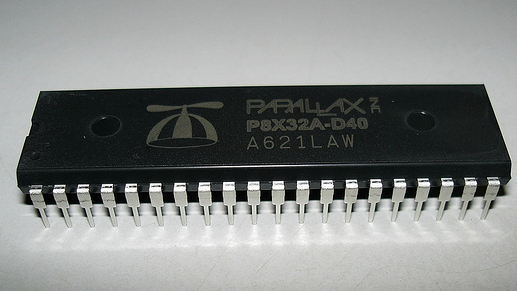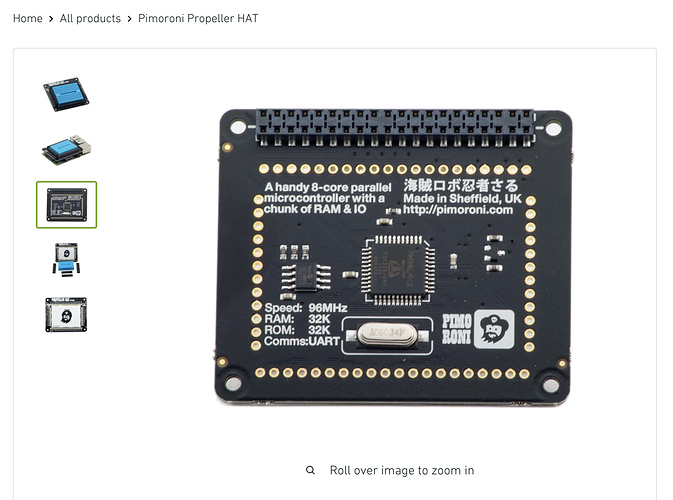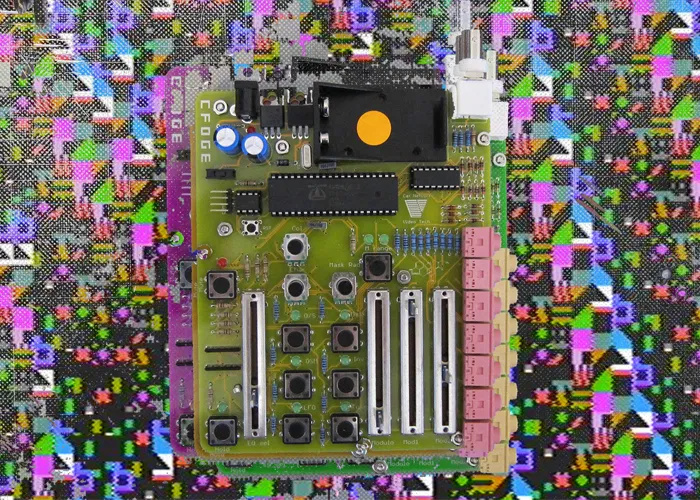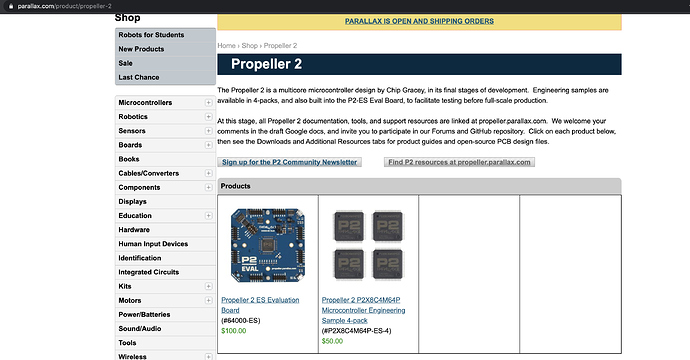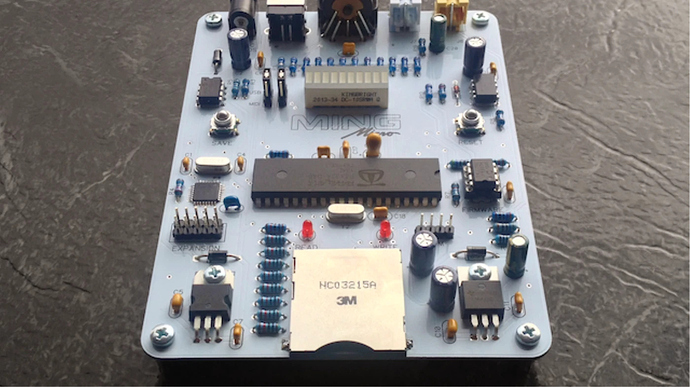I don’t know much about embedded systems - only very recently have i ventured out of the safety of ArduinoLand, so everything i write is only gleaned from what i found online - hopefully people who know more can weigh in too.
That said there is no denying that the Parallax Propeller is a rather unusual microcontroller.
the first unusual thing i found while reading the wikipedia page was that Parallax Inc. the company who designs, manufactures, and sells Propeller microcontrollers was founded and is run by someone called Chip. (haha)
the main unusual thing is the multi-core parallel processor architecture with 8 cores . each core (which parallax calls a cog) has a 32bit cpu, its own memory and access to the shared memory controlled by a central hub.
(and this is what caught my attention) from wikipedia:
Each cog also has access to two dedicated hardware counters and a special video generator for use in generating timing signals for Phase Alternating Line (PAL), National Television System Committee (NTSC) and Video Graphics Array (VGA)
a deeper dive into the video gen documentation confirmed directly what i was hoping:
Yes. Each of the Propeller chip’s 8 cogs has its own video generator hardware that transmits 32-bit chunks of video image data at a configurable rate. Since each cog operates independently, up to eight video signals could be generated simultaneously.
somehow this fact just really captured my imagination ! generating 8 analog video signals in parallel, in colour! (even if lowfi) with a single uC is crazy! even today 14 years after the this chip was released.
14 years is a long time for silicon, and it seems the market and community has mostly moved on. searching the web is full of broken links and posts from 2012 and earlier. you can still buy it from mouser but accessories like this cool raspberry pi Propeller HAT from Pimoroni is long out of production.
another interesting part is the custom language SPIN that runs on it - highlevel, interpreted and whitespace formatted (sounds a bit like the micropython that is gaining popularity on embedded systems today!) this is what a hello world/blinkly looks like:
CON
_CLKMODE = xtal1 + pll16x
_XINFREQ = 6_000_000
MY_LED_PIN = 0 ' Use pin A0
PUB main
DIRA[MY_LED_PIN] := 1 ' Set the LED pin to an output
repeat ' Repeat forever
OUTA[MY_LED_PIN] := 1 ' Turn the LED on
waitcnt(cnt + clkfreq) ' Wait 1 second
' cnt is the clock tick counter,
' clkfreq is the number of clock ticks in a second
OUTA[MY_LED_PIN] := 0 ' Turn the LED off
waitcnt(cnt + clkfreq) ' Wait 1 second
you also can program it in pasm the low-level assembler language, or use the Propeller-GCC compiler to write in C.
another thing that i like about the Propeller is that it is completely open source hardware and software - everything from the Verilog/HDL code to Spin interpreter and IDE. It also just sounded like a nice beginner/hacker friendly community - although dated now they obviously put a lot of effort into tutorials and educational resources at the time - getting processing power on DIP is a also nice change to todays TQFP market. plus can you imagine casually chatting with the CEO of Atmel on their forum ?
the only video-art related project using a propeller that i know of is the Cat Full of Ghosts Video Equation (this is how i first heard of these):
an awesome colour character and pattern generator ! this design only uses one video output (im not sure how many cogs are used in the program though - the code is not available as far as i know)
Since 2014 Parallax has been working on the Propeller2, (with over 10x performance gains and new max clock speed of 200 MHz) and now you can even experiment with it - either with limited-edition boards/ silicon samples or design emulation on supported FPGAs
